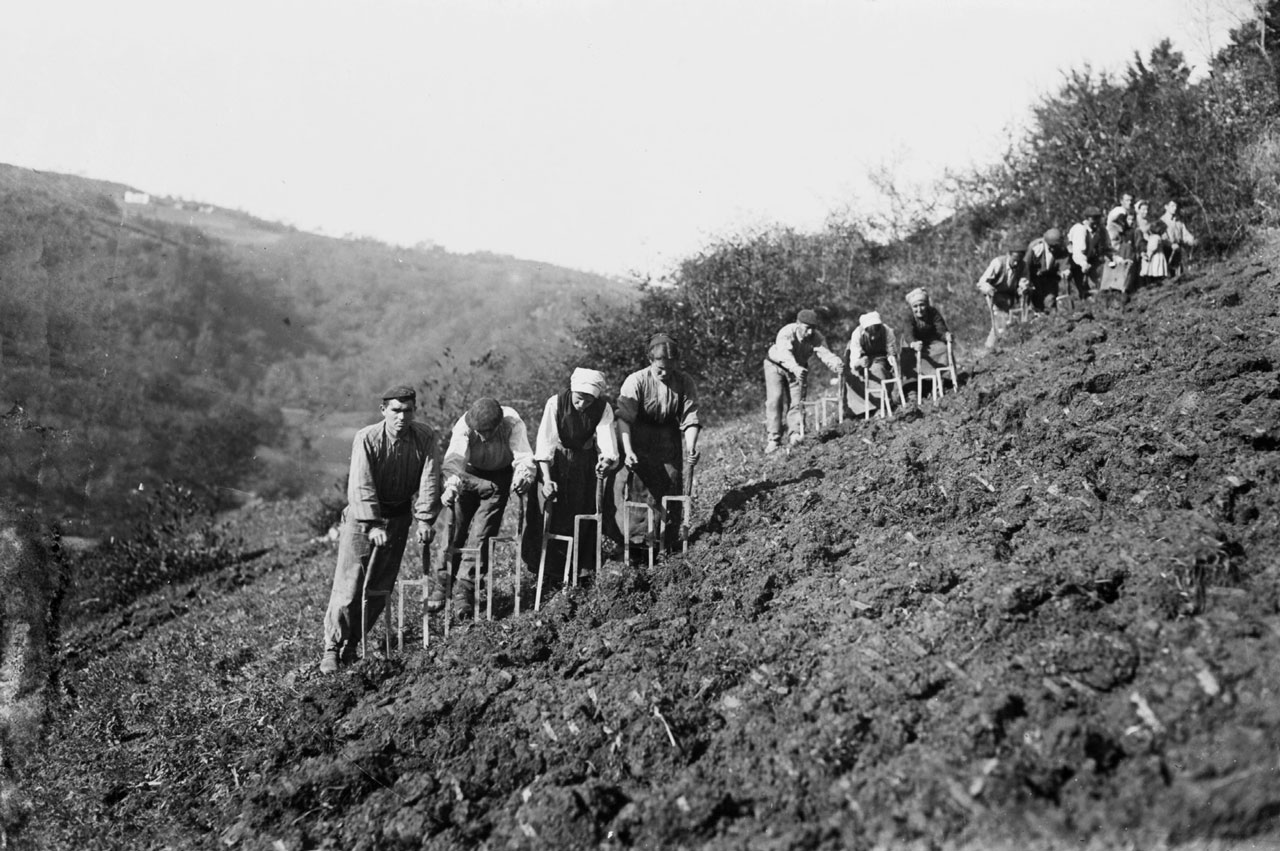Hearth, wood-burning stove and butane cooker. Neighbourhood of Aiuria (Muxika-B), 2011. Source: Segundo Oar-Arteta, Etniker Euskalerria Groups.
House and Family in the Basque Country


House and Family in the Basque Country
Etxe onak, txingar ona. A good fire in a good home.
Family Diet in the Basque Country


Family Diet in the Basque Country
Food was grown on the family small holding or bought from local markets, which, in turn, were supplied with food grown locally. A few products, nearly always non-staples, complemented local or household self-supply.
Children’s Games in the Basque Country


Children’s Games in the Basque Country
Before glass, and even clay, marbles were introduced, they used parts of plants, including oak acorns and seed pits.
Traditional Medicine in the Basque Country


Traditional Medicine in the Basque Country
Osasun ona eukiteko, oiloekin ohera eta txoriekin jaiki. Early to bed and early to rise makes a man healthy, wealthy and wise.
Rites from Birth to Marriage in the Basque Country


Rites from Birth to Marriage in the Basque Country
As was the case of all important events, the wedding banquet, eztei-bazkaria, was celebrated at home.
Funeral Rites in the Basque Country


Funeral Rites in the Basque Country
Cuando el cárabo canta, la muerte levanta. When the tawny owl hoots, death wakes up.
Livestock Farming and Shepherding in the Basque Country


Livestock Farming and Shepherding in the Basque Country
A black animal, and particularly a billy goat, was considered to protect the herd, flock or barn throughout the area surveyed.
Agriculture in the Basque Country


Agriculture in the Basque Country
Spades, ploughs, rakes, sickles, scythes and threshers were the essential tools for agricultural work.
,-2011.jpg)






